Film and TV model maker warns skill may disappear
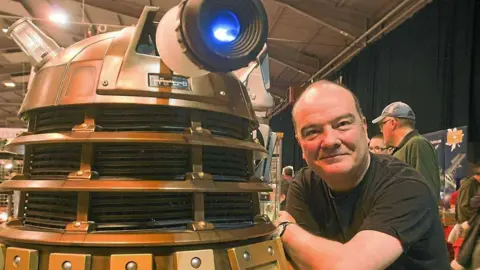 Mike Tucker
Mike TuckerA visual effects designer who worked on award-winning films and TV shows has warned the art of model-making is at risk of vanishing in the coming decades.
Mike Tucker has worked with Discover Bucks Museum in Aylesbury on an exhibition of original models and props from British science fiction shows, such as Doctor Who.
The artist, in his 60s, said he hoped the displays could inspire a future generation of visual effects artists.
"A lot of the companies, like myself, have either stopped because they've not been able to compete with the CGI guys, or just retired out of the business."
"The number of us who know how to do it is getting smaller and smaller with every passing year," he added.
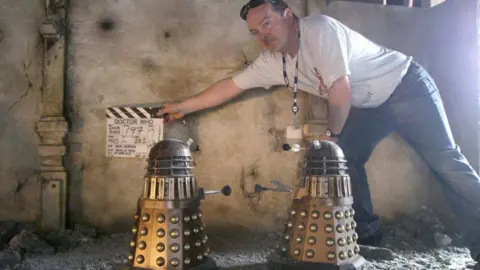 Mike Tucker
Mike TuckerThe Beyond the Stars exhibition includes models and props the Oxfordshire resident has worked on, including 1980s' Daleks, Marvin the Paranoid Android and a model of Starbug from Red Dwarf.
Originally from Swansea, Mr Tucker entered the industry via the BBC's in-house visual effects department in the 1980s, which closed in 2005.
He recalled: "It had over 100 members of staff when I joined. By the time we closed down we were down to 14 people, because the numbers of shows that required our particular expertise was getting smaller and smaller.
"It's not dead completely yet. If left unchecked there is going to be a gap in about 10, 15, 20 years' time of just finding people who know how to do it."
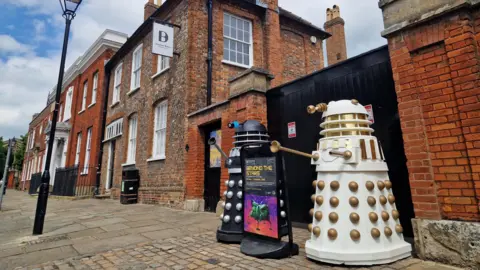 Mike Tucker
Mike TuckerHis company, The Model Unit, won a Bafta for its work on the Doctor Who 50th anniversary special in 2013.
But his models have not just been used in sci-fi - they have also appeared in natural disaster documentaries and historical dramas, like The Crown.
The 2007 Oscar-winning film Atonement featured scenes where the London Underground flooded, shot using a model-sized recreation of the location.
Mr Tucker said a producer on the film told him they had "never seen a convincing model shot", to which he countered: "No, you've never spotted the convincing ones."
"When our work is done well, it's invisible," he said.
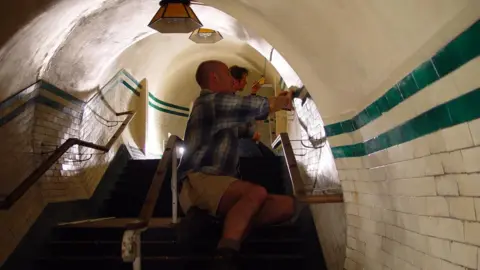 Mike Tucker
Mike TuckerHe explained the future of the art would require a blend of practical effects with computer generated imagery.
Speaking of the exhibition, he added: "We've also got a few bits and pieces in there that were used in conjunction with digital effects.
"I'm hoping we will sort of show people how two disciplines can work side by side.
"Both techniques have got their plusses and minuses, and in an ideal world the two should work hand in hand."
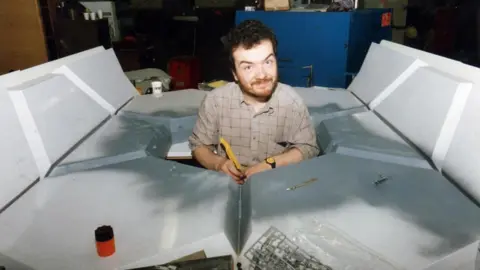 Mike Tucker
Mike TuckerHowever, John Lee, head of model making at the National Film and Television School in Beaconsfield, argued that although he understood Mr Tucker's concerns, he was "not worried" about the future of the skill.
He said in the last year the applicants for his course had increased by 20%.
"If my application numbers were dropping each year I would be worried," he said.
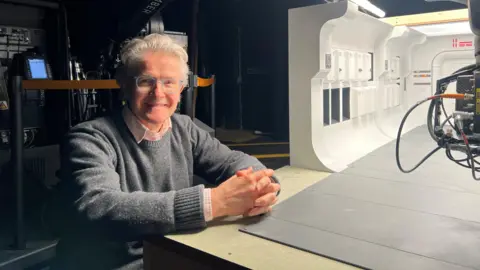 John Lee
John LeeThe lecturer, who has worked on recent Paddington and Star Wars films, said large studios come to work with him and his students.
"People said to me in 1990 that model making would be dead once we started using CGI on TV commercials.
"You can't do everything with technology - you need artists that are able to visualise and make things practically, often quicker and cheaper than CGI."
The exhibition at Discover Bucks Museum runs until 5 October.
Follow Beds, Herts and Bucks news on BBC Sounds, Facebook, Instagram and X.
